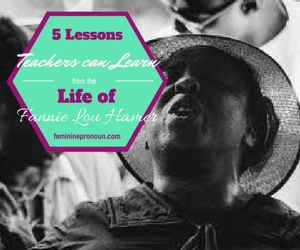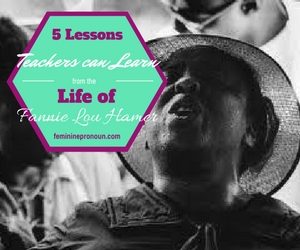
In last week’s blog, “The Students are Co-Creators In the Classroom,” I emphasized how important envisioning a future past the classroom for poor students and students of color is. But often times, when educators and activists discuss “poor students and students of color,” it is as if we are discussing a student who doesn’t show up often in our classrooms. So, to that end, how often is a teacher likely to see a “poor student” or a “student of color” in a public school classroom?
Well, according to the Washington Post, “For the first time in at least 50 years, a majority of U.S. public school students come from low-income families.” In fact, the article, “Majority of U.S. Public School Students are in Poverty,” reveals: “51 percent of students in pre-kindergarten through 12th grade in the 2012-2013 school year were eligible for the federal program that provides free and reduced-price lunches.” Being eligible for free and reduced lunch is described as a “rough proxy” for poverty.
Accordingly, The Center for Educational Statistics reports, “Between fall 2003 and fall 2013, the number of White students enrolled in public elementary and secondary schools decreased from 28.4 million to 25.2 million, and the percentage who were White decreased from 59 to 50 percent. In contrast, the number of Hispanic students enrolled increased from 9.0 million to 12.5 million, and the percentage who were Hispanic increased from 19 to 25 percent.”
It seems that the majority of students a teacher is likely to instruct in a public school classroom will be “poor” and “of color.”
And that’s a good thing.
The pupils in our classrooms are the same poor, working poor and working class citizens that that have risen to invent almost every device we own that make our lives easier.
The children in those desks are the same children who used to be forced to work, — (Yes, in the U. S. children used to have to work) — and who went on strike with Mother Jones and gave us all a more humane work week, leading the way to worker’s compensation, and paid time off for maternity leave.
Our classrooms are filled not with the wealthy people (the 1%), who do not represent the majority concerns of the U.S., but with the poor, the working poor, and the working-class voice. The majority voice.
In my research into the life of proto-feminist, civil rights activist Fannie Lou Hamer, I discovered that the civil rights activists in the Student Non-Violent Coordinating Committee could have taken a “top down” tactic, and looked to the small but present black middle class in Mississippi to train as leaders of the movement. They could have focused on the few college graduates and business owners. The ones who spoke standard English and shared many of their middle class markers. But they realized that the community was not represented by its highest achievers, but by its hardest workers. They found Fannie Lou Hamer among the Folk, not the finest.
As a result, those young people learned what has been proven time and time again: when the masses rise up, the movement is unstoppable.
And here’s just one piece of proof: Do you ever feel frightened at the prospect of going to vote? Do you think, “I hope I survive this trip to the polls.” Of course not. And that is because a popular movement, made up of the majority of those affected by voter disenfranchisement was activated through education. And because of that, we all enjoy a better standard of life.
Fannie Lou Hamer said, “None of us are free, until all of us are free.” I would submit that none of us are educated, until all of us are educated.”
So instead of bemoaning the fact that our classrooms are filled with students who mirror America, we should be celebrating the opportunity to activate the very people who have always (and will continue to) save us all.
Send me my FREE tips, links, & printables for my COLLEGE BOUND Screenager!

